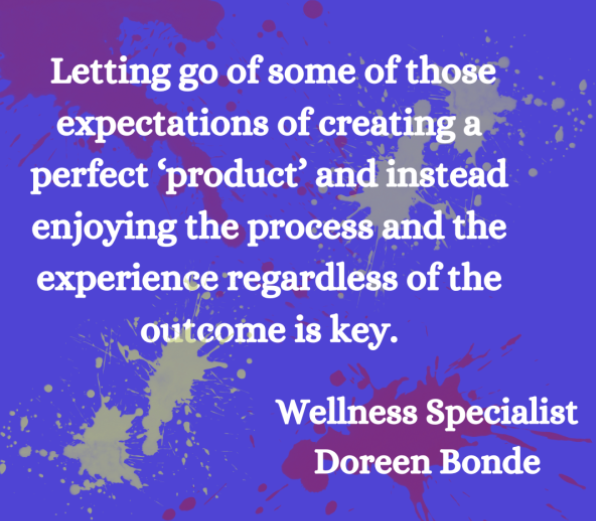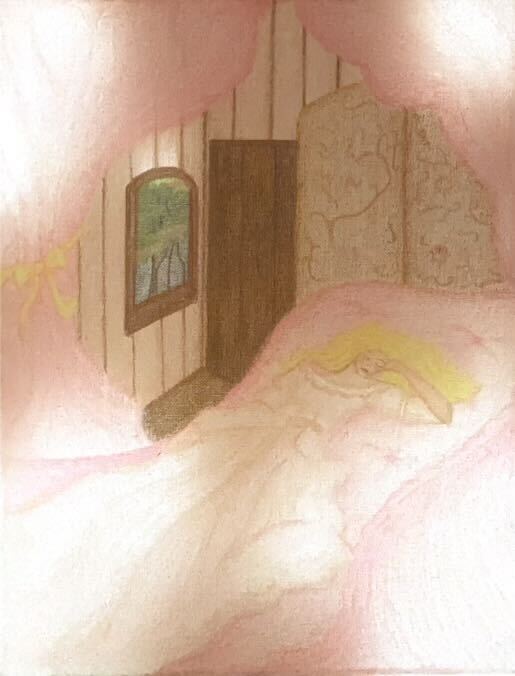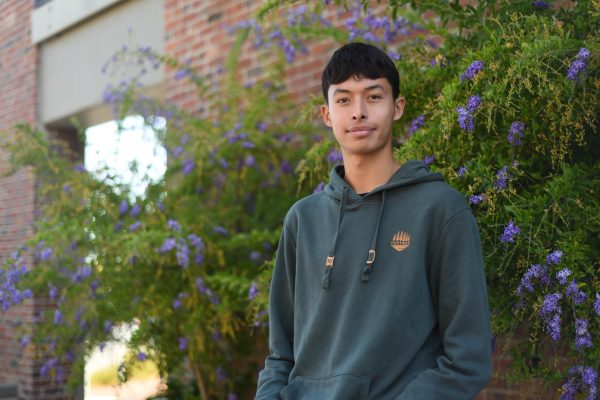Senior Farida Elgebaly breathes a sigh of relief as she finishes the final strokes of her painting of a storybook scene, then checks with her reference image again to make sure the painting is synonymous with what she initially intended to create. Upon completion, Elgebaly can feel the stress melt away as she finds peace.
Elgebaly first started art lessons in elementary school, and after discovering her love for the activity, she continued making art in her own free time. As the Secretary of MV’s Bring Change to Mind, a club dedicated to spreading mental health awareness, she has incorporated art into the club meetings and curriculum.
“In my free time, I like to paint because I feel like it’s a really nice way to just wind down and take your mind off of life,” Elgebaly said. “For Bring Change to Mind, it’s another way to relieve stress, especially for our members who just want a way to get their mind off of things.”
When creating art to relieve stress, Elgebaly says she usually paints whatever comes to mind, occasionally using reference images. For her, art has become a natural hobby that not only brings her happiness, but also visually reflects her mental state.
“I’ve noticed that I’ve used more warm colors and happier images,” Elgebaly said. “I think it reflects my mental state, especially more recently.”
Senior Sabrina Moore, who helped create the recent FUHSD advisory focusing on using art to destress, has seen a similar calming effect in herself when she does some sort of artistic activity. Instead of painting, as Elgebaly does, she likes to doodle, draw or write in her journal about her ideas and feelings.
“I’ve seen a great improvement in how I feel about myself and how I feel about typical things that happen in my day after journaling,” Moore said. “I’ve found that it helps with my stress levels and helps me occupy myself so I can have a calmer approach to my day.”
Moore has also noticed benefits from partaking in art with her classmates and friends, who have taken steps to replace technology-centered activities like scrolling through TikTok with journaling, writing or coloring. Wellness Specialist Doreen Bonde, who is in charge of the MVHS wellness room, echoes Moore’s points.
“Studies have shown that participating in art activities actually lowers stress hormones and can raise serotonin,” Bonde said in an email. “It has also been shown to improve academic performance, and it’s just fun! It gives you the opportunity to use your brain in a different way and allows you to unplug from your phone and laptop.”
While both Moore and Bonde agree that performing an artistic activity is an effective means of destressing, they warn that students can fall victim to focusing on creating perfect art pieces instead of enjoying the process. To combat this mindset, Bonde mentions an activity in the wellness room where students can use water painting boards, which allows the art that is painted to disappear when the water dries. According to her, this can help students gain the experience of art without pressure to create an end result.

“Sometimes folks feel an internal pressure to create something aesthetically pleasing and perfectly executed,” Bonde said. “While there is certainly room for that, the art we’re discussing here is an activity for stress management and self-expression, so letting go of some of those expectations of creating a perfect ‘product’ and instead enjoying the process and the experience regardless of the outcome is key.”
Moore agrees with Bonde, saying that avoiding destructive perfectionism was a lesson she was trying to incorporate in the latest advisory lesson. She admits that in her experience with art, she has faced this pressure, which negatively impacted the initially positive outcome of the art on her mental health.
“I used to look at art as something that needs to be perfect and as something that I should be able to show to someone else to impress them,” Moore said. “But as time progressed, I started experimenting with different art forms, like different crayons, different types of drawings, different types of journaling, as well as not having to journal every day and not having to draw every day. I just spent time experimenting with what worked for me.”
While Moore and Bonde both agree that it is important to not put pressure on yourself to create perfect art, especially when using art to cope, Bonde stressed the importance of shifting the idea from using art to cope to using art to manage stress.
“I would encourage widening the definition of art’s use as a wellness tool,” Bonde said. “In other words, art and creative activities do not have to be limited to being a coping tool when one is struggling. Often, folks find art is a proactive strategy to manage their stress levels, express themselves and more.”












